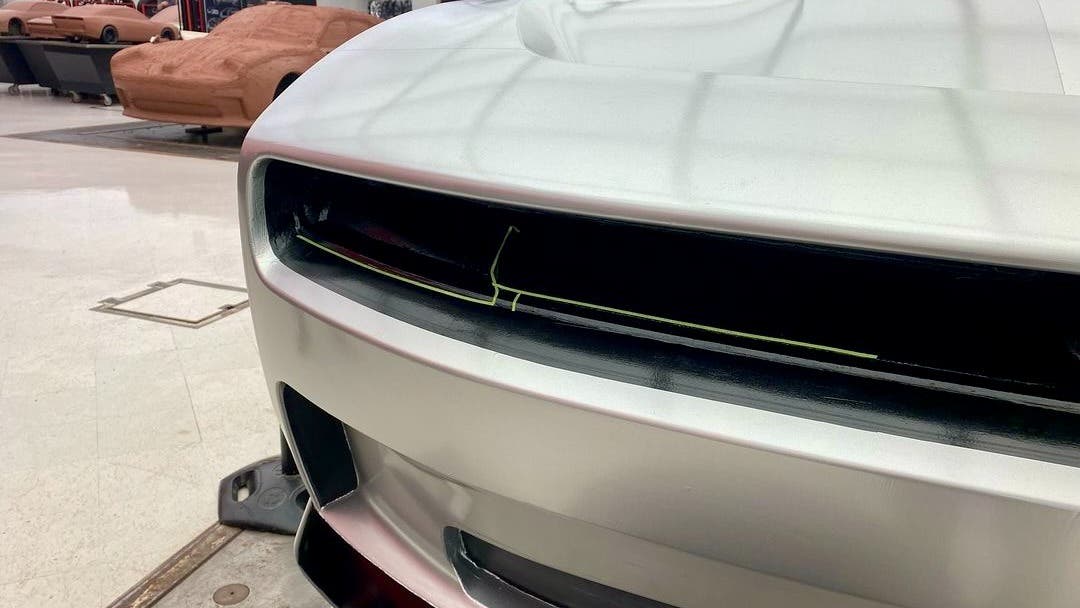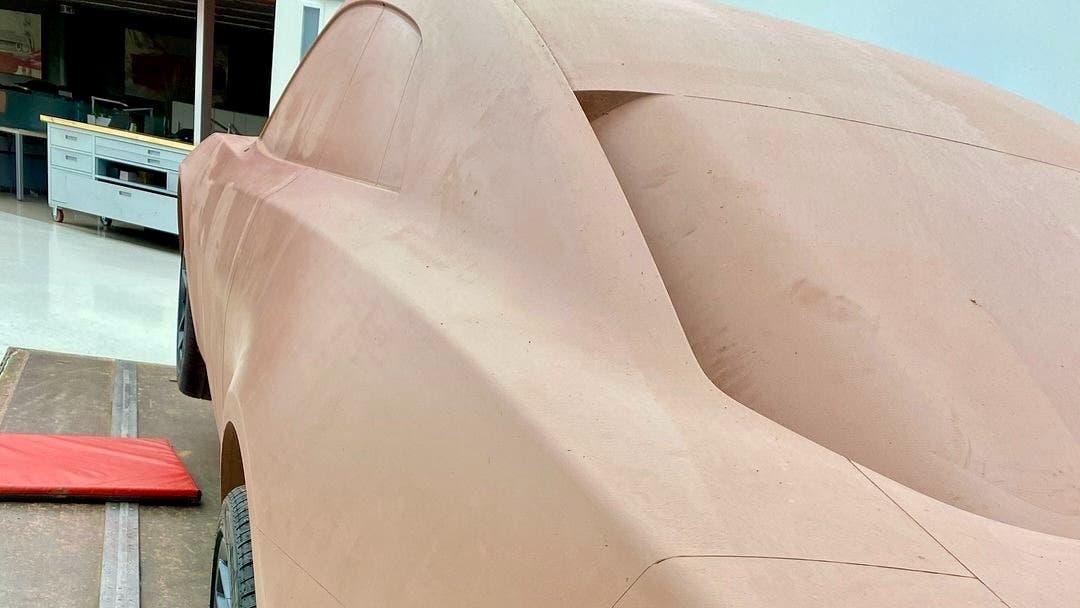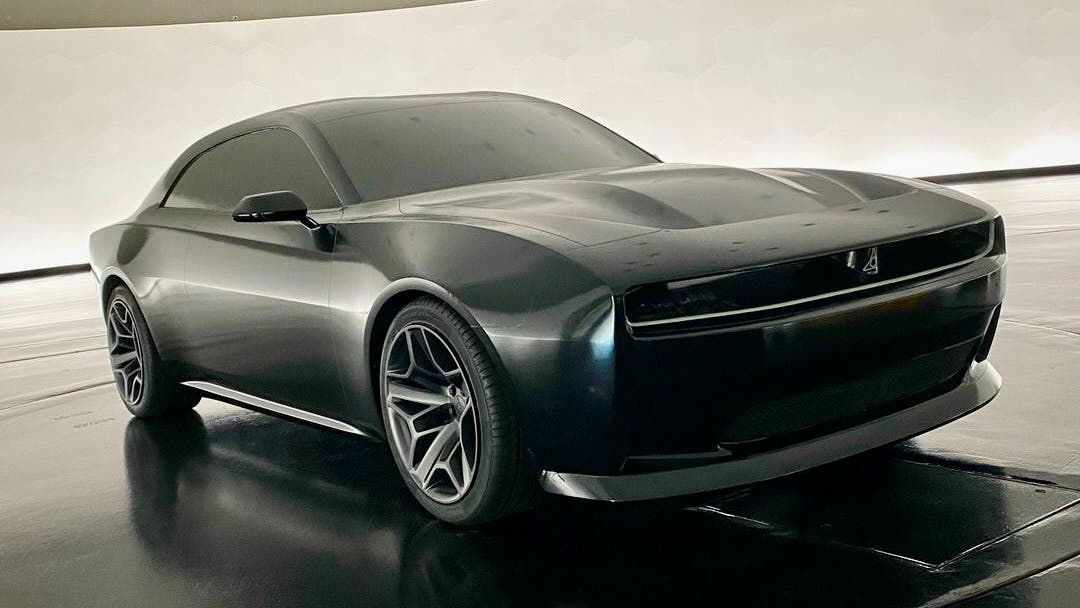Ralph Gilles, Head of Stellantis Design, has shared some behind-the-scenes glimpses of the new Dodge Charger‘s design development. To celebrate three years since its design proposal, Gilles posted a series of images from the Chrysler Tech Center in Auburn Hills, Michigan on Instagram. Gilles wrote: “Three years ago to the day, we brought the 1st dynoced (thin paint-like film we put over the clay model for observation) Charger proposal from the Dodge/SRT studio into the Design Dome, at our Auburn Hills tech center. I had a moment… 🖤 the journey of Automotive design.”
Dodge Charger: here’s how the new generation’s design evolved

The original model was made in clay and featured Dodge’s “rhombi” logo, which was replaced in the final version with the retro Fratzog emblem. The design then evolved to include more refined features suitable for production, aiming to improve both aesthetics and aerodynamics, especially for the electric Daytona version.
In other photos, you can also see that the Charger Daytona visible at designer Deyan Ninov’s workstation had a different appearance compared to the combustion-engine Charger SIXPACK coming in 2025. This one had a power dome hood with a more aggressive look. However, its design is very similar. Additionally, the clay models show details of a more sculpted front fascia and sharper hood lines.
The front grille takes inspiration from the 1968-1970 Dodge Charger B-Body, combined with modern elements like the illuminated Fratzog logo and LED daytime running lights. Furthermore, the R-wing hood design gives the vehicle a futuristic appearance. The new Charger’s side profile maintains an elegant and modern look, with classic Coca-Cola bottle curves. Additionally, the electronic door handles and glossy black accents give the muscle car a luxurious appearance. As for the rear, the new Charger draws inspiration from the 2011-2014 muscle car.

Essentially, this represents a significant change for Stellantis’ American automaker, considered risky by some. For this reason, Dodge has moved up the debut of the ICE Charger with the Hurricane I6 twin-turbo engine. Many enthusiasts wouldn’t be ready for the transition to electric, especially when it comes to muscle cars. It will be interesting to compare the two vehicles, perhaps in a drag race.

